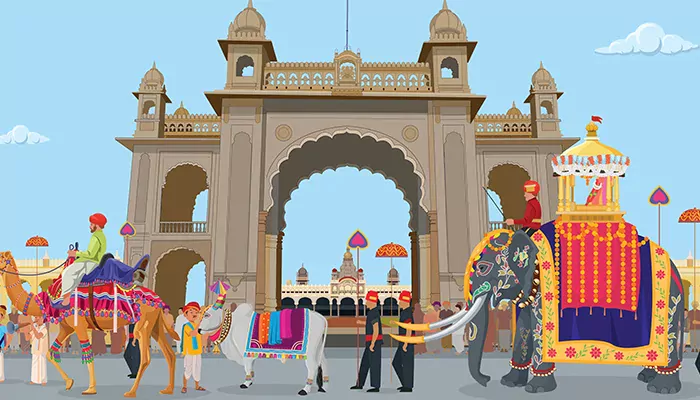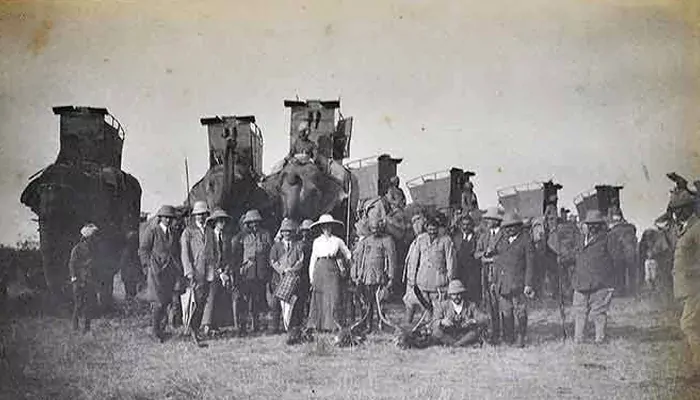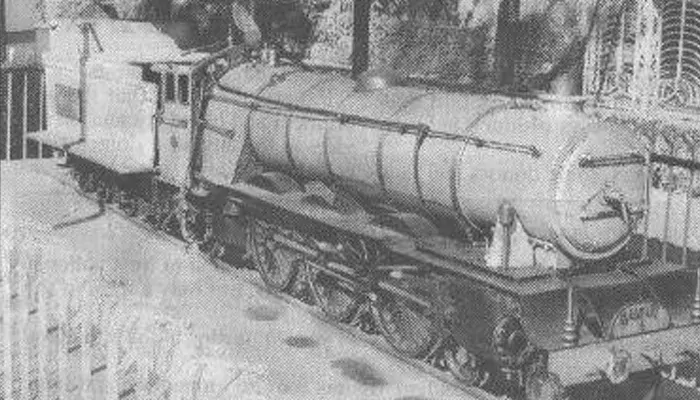
Opulence, fireworks, and a tiger or two—when Indian royals redefined the meaning of grand celebrations.
Imagine turning a year older and being gifted a fully-grown tiger. Not a stuffed one. A real and massive tiger. With golden anklets, no less. Welcome to the world of the Indian Maharajas—where birthdays weren’t just observed, they were epic sagas.
Forget the modern day balloon arches and confetti cannons—royal rulers from pre-independence era used to celebrate their birthdays like demigods with gold-laden thrones, international orchestras, 100-course meals, and fireworks that could light up a small state.
In princely India, a Maharaja’s birthday wasn’t a private affair. It was an official state holiday. Schools shut down. Shops closed. Subjects lined the palace roads with garlands, drums, and synchronized cheers. It wasn’t just about cake. It was about declaring power, loyalty, and the sheer superiority of being royal.

Hunting was a royal sport, but birthdays amped it up. Maharaja of Jaipur once held a "shikaar" event (hunt) on his birthday—where tigers were “invited” to the party (not voluntarily, of course). Picture this: elephants carrying the birthday boy, followed by nobles in embroidered sherwanis, off to hunt big cats under the desert sun.
Trivia: Maharaja Bhupinder Singh of Patiala reportedly hunted over 300 tigers in his lifetime—and received many on royal birthdays from British officials and neighbouring princely states.
The royal durbar (court) was transformed into a spectacular stage. The Maharaja would sit on a solid gold or silver throne, custom-polished and draped in the softest silk. The court would gather with gifts, some of them wildly extravagant: elephants, Arabian horses, rare emeralds, and sometimes, entire villages.
Trivia: Maharaja Sayajirao Gaekwad III of Baroda once gifted a solid gold toy train—running on real tracks—around his dining table for his birthday feast. Yes, the desserts literally came to you.

The birthday menu was an art form—often spanning 100+ dishes. Curries infused with saffron, biryanis cooked in rosewater, kebabs that melted in your mouth, and desserts like sohan halwa or malpua—served on silver or gold plates by liveried servants.
Trivia: The Nizam of Hyderabad’s birthday buffet once reportedly included 14 different types of biryani and took almost three kitchens and 500 chefs to prepare.
As the sun dipped, the real show began. Let's talk about fireworks in the night sky! It was not Diwali kind, but giant, orchestrated sky displays with custom messages that spelled the Maharaja’s name across the sky. Lakes were filled with floating lotus-shaped lamps, palace walls projected light art, and orchestras played classical ragas throughout the night.
Fun fact: Some kings even brought in European pyrotechnicians to outdo the previous year’s display.

From diamond-studded sherwanis to Persian carpets worth a fortune, birthdays were about exchanging gifts of royal scale. Sometimes, numerous treaties were signed and land gifted during these events—a reminder that power, politics, diplomacy and celebration were always intertwined.
Beyond the grandeur, many Maharajas used their birthdays for societal good. Free food for the poor, mass marriages, and donations to hospitals and schools were often part of this celebration. In a way, their birthday wasn't just theirs—it was their people’s too.
Even today, many descendants of royal families continue some of these rituals—albeit on a scaled-down version (thankfully, the tiger is off the guest list now!). But the grandeur lives on in palaces, stories, and yes—tourist brochures.